Blagdon Lake Birds
September 2013 News
Sunday 1st September [Sunny, with a stiff westerly breeze]
The Little Stint Calidris minuta had relocated to Wookey Point at Top End today, where there were 6 Ringed Plovers Charadrius hiaticula, 3 Dunlins Calidris alpina, 3 Common Snipe Gallinago gallinago and a Northern Lapwing Vanellus vanellus. However, while I was there a Peregrine Falco peregrinus had a go at them, resulting in some of the Dunlin and Ringed Plovers flying west. 3 Common Sandpipers Actitis hypoleucos (one on Rugmoor Point and 2 at Home Bay) were also feeding around the lake, but the biggest surprise were 2 Chiloe Wigeon Anas sibilatrix at Top End (an escaped species last seen at Blagdon in 2005). I didn't see the forewing, but judging by the head colour I think they are probably a pair.
When the Peregrine flew over, it was amazing to see several hundred Eurasian Teal Anas crecca scatter onto the lake. There has clearly been an increase in them, Gadwall Anas strepera and Northern Shoveler Anas clypeatus since the WeBS count. I took the opportunity to remove the dead Herring Gull Larus argentatus from Tiny's Shallow this afternoon because it has been quite noticeable that no large gulls have been loafing there since it was predated.
There is a rumour that an Osprey was sighted today, but I have no details. Can anyone throw any light on it? Although at the lake for a couple of hours, I've spent quite a lot of time finishing the website report of the UK National Nathusius's Conference held last week. I have written a precis of each presentation.
I ran the 15W Heath Trap overnight (min. temp. 12 Celsius) at Pipe Bay Copse and disappointingly only caught:
- B&F1941 Willow Beauty Hepialus sylvina 1
- B&F2044 Dingy Footman Eilema griseola 1
- B&F2107 Large Yellow Underwing Noctua pronuba 4
- B&F2109 Lesser Yellow Underwing Noctua comes 1
- B&F2126 Setaceous Hebrew Character Xestia c-nigrum 1
Monday 2nd September [Sunny spells]
I spent about 5 hours around the lake today, so its's disappointing to have to report little change from yesterday. The Little Stint Calidris minuta was at Wookey Point with 5 Ringed Plovers Charadrius hiaticula and 2 Dunlin Calidris alpina. There were 12 Common Snipe Gallinago gallinago scattered around the Top End, a White Wagtail Motacilla alba alba and our first returning Northern Pintail Anas acuta. There was no sign of the Chiloe Wigeon. Common Sandpipers Actitis hypoleucos were noted at Long Bay, a singleton, and at Paradise where there were 4. An adult Yellow-legged Gull Larus michahellis was on Tiny's Shallow when I arrived, but flew off shortly after.
I saw a Holly Blue Celastrina argiolus at Cheddar Water, countless Speckled Woods Pararge aegeria, a Gatekeeper Pyronia tithonus, a Common Blue Polyommatus icarus and my second adult Vapourer Orgyia antiqua of the autumn. Chatting with angler Dave Wheeler before he went out in a boat, he told me he'd seen a Clouded Yellow Colias croceus that he photographed on Red Clover Trifolium pratense at Rugmoor Gate recently. He also told me he'd seen around half a dozen Silver-washed Fritillaries Argynnis paphia a couple of years ago on brambles at the edge of All Saint's Wood. This single sighting is more than all the other records I have for the lake, so it will be worth checking out this old woodland next year to see if there is a resident population.
This evening I carried out a Nathusius's Pipistrelle transect and recorded 5 between the dam and Holt Bay.
Tuesday 3rd September [Early mist burned off at lunchtime]
I awoke to thick mist hanging over the valley obscuring the view of the lake and 'To Autumn' by John Keats immediately sprang to mind... you know, Season of mists and mellow fruitfulness, but it's the third verse that I think is so apt:
Where are the songs of Spring? Ay, where are they?
Think not of them, thou hast thy music too, -
While barred clouds bloom the soft-dying day,
And touch the stubble plains with rosy hue;
Then in a wailful choir the small gnats mourn
Among the river sallows, borne aloft
Or sinking as the light wind lives or dies;
And full-grown lambs loud bleat from hilly bourn;
Hedge-crickets sing; and now with treble soft
The red-breast whistles from a garden-croft;
And gathering swallows twitter in the skies.
By mid-morning I could see across Top End, but looking down the lake towards the dam, it just seemed to disappear into infinity. The juvenile Little Stint Calidris minuta, 6 Ringed Plovers Charadrius hiaticula and 2 Dunlin Calidris alpina were still on Wookey Point, and I saw 3 Common Snipe Gallinago gallinago, a Green Sandpiper Tringa ochropus, a Northern Lapwing Vanellus vanellus, a Northern Pintail Anas acuta and 2 Eurasian Wigeon Anas penelope from the hide. At one point most of the wildfowl flushed at Top End and I counted at least 84 Northern Shovelers Anas clypeata in flight. I also counted 18 Little Grebes Tachybaptus ruficollis, saw a Sedge Warbler Acrocephalus schoenobaenus at Bell's Bush, and Blackcap Sylvia atricapilla (gorging on elderberries), Spotted Flycatcher Muscicapa striata and Eurasian Siskin Carduelis spinus at Lodge Copse (you don't often see those two together in a bush in these parts).
The water level is dropping noticeably every day, and there has been a marked fall in Tufted Duck Aythya fuligula numbers since the record WeBS count in August, concomitantly, there has been a significant increase in dabbling duck numbers congregating at Top End. During the last few days, nearly every bush seems to have had a Chiffchaff Phylloscopus collybita calling from it and Pied Wagtails Motacilla alba yarrellii are to be seen on the foreshore all around the lake. The year speeds inexorably on...
This evening I carried out a Nathusius's Pipistrelle transect and recorded 2 between Holt Bay and Ubley entrance gate. I also recorded a Greater Horseshoe Bat Rhinolophus ferrumequinum and, harking back to Keats, lots and lots of crickets along the hedges.
I ran the 15W Heath Trap overnight (min. temp. 12 Celsius) at Pipe Bay and caught:
- B&F1906 Brimstone Moth Opisthograptis luteolata 1
- B&F1914 Dusky Thorn Ennomos fuscantaria 2
- B&F2003 Pebble Prominent Notodonta ziczac 1
- B&F2107 Large Yellow Underwing Noctua pronuba 7
- B&F2123 Small Square-spot Diarsia rubi 5
- B&F2126 Setaceous Hebrew Character Xestia c-nigrum 1
- B&F2178 Feathered Gothic Tholera decimalis 1 [first site record]
- B&F2269 Centre-barred Sallow Atethmia centrago 1 [first site record]
- B&F2353 Flounced Ructic Luperina testacea 1
Wednesday 4th September [Sunny and hot]
There has been a change around overnight by the looks of it. Andy Mears reported that the Little Stint, 6 Ringed Plovers and 2 Dunlin were in front of the Fishing Lodge last night, but when I went down to check the moth trap (2 new species for the site list) and had a quick look around I saw no sign of the little group of waders that had been frequenting Wookey Point. Instead, I saw 5 Common Snipe Gallinago gallinago (unusually, one out on Tiny's Shallow, with one each at Burmah Road, Wookey Point and at least 2 at Top End), a Common Greenshank Tringa nebularia in Holt Bay, 2 Little Egrets Egretta garzetta on Rainbow Point and 5 Common Sandpipers Actitis hypoleucos (one on the dam, one at Polish Water and 3 on Wookey Point). At least one Eurasian Wigeon Anas penelope was among the throng of sleeping wildfowl on the bank at Top End.
This evening I carried out a Nathusius's Pipistrelle transect and recorded 3 between Rugmoor entrance gate and Butcombe Bay barrier. There seems to be a pretty high density of Tawny Owls Strix aluco hereabouts too, judging by all the calls/song I heard while I was out. I had a walk around Nempnett Thrubwell this evening listening for ♂ Nathusius's 'advertising' but haven't had the time to analyse my recordings yet.
I ran the 15W Heath Trap overnight (min. temp. 11 Celsius) at Rugmoor Point car park and caught:
- B&F1764 Common Marbled Carpet Chloroclysta citrata 1
- B&F1906 Brimstone Moth Opisthograptis luteolata 1
- B&F1913 Canary-shouldered Thorn Ennomos alniaria 1
- B&F2107 Large Yellow Underwing Noctua pronuba 26
- B&F2109 Lesser Yellow Underwing Noctua comes 1
- B&F2134 Square-spot Rustic Xestia xanthographa 3
- B&F2434 Burnished Brass Diachrysia chrysitis f. juncta 1
Thursday 5th September [Sunny and warm]
Another wave of shorebirds has arrived overnight with 2 juvenile Ruff Philomachus pugnax (Wookey Point), a juvenile Dunlin Calidris alpina (Wookey Point), 14 Ringed Plovers Charadrius hiaticula (3 Wookey Point and 11 Polish Water, Lodge), a Common Sandpiper Actitis hypoleucos (Polish Water), more Common Snipe Gallinago gallinago than you could shake a stick at (I counted 26 at various points from Long Bay to Top End), the 'Billy-no-mates' Northern Lapwing Vanellus vanellus (Flower Corner) and I heard a Common Greenshank Tringa nebularia and Green Sandpiper Tringa ochropus call while I was there to collect my moth trap this morning (see previous day for catch details - we conventionally record moths caught overnight against the date the trap is put out).
There were 3 Eurasian Wigeon Anas penelope among the wildfowl along Indian Country bank and I saw the two ringed juvenile Great Black-backed Gulls Larus marinus 'D:AC' and 'D:AG' again (ringed on Denny Island by the Goldcliffe Ringing Group).
Paul Williams reported "three Ringed plovers on Wookey point, along with the two Juv Ruff. Also in the area around the hide: 3 Common Sandpipers, 1 Greenshank, 1 Lapwing and enough Snipe to aerate a cricket pitch. No sign of anything in front of the Lodge." So, I had another look this evening and saw 2 Green Sandpipers and 2 Common Sandpipers with the Dunlin and 2 Ruff at Top End.
Then I did a Nathusius's Pipistrelle transect and recorded just a single Nathusius's at the start, on the south end of the dam. I walked to the conservation barrier via Butcombe Bank and recorded fewer bat calls than I expected in an area where we've had considerable success trapping in the last couple of years.
Friday 6th September [Sunny, though a little cooler than of late]
Not much change today. Mike Gillett posted a message on the Top End hide noticeboard to say he'd seen 4 Ringed Plovers Charadrius hiaticula and a Peregrine Falco peregrinus at the Lodge, that I didn't see during my visit, but aside from those, I saw 2 juvenile Ruff Philomachus pugnax (Wookey Point), a juvenile Dunlin Calidris alpina (Wookey Point), a Common Sandpiper Actitis hypoleucos (Polish Water), 15 Common Snipe Gallinago gallinago scattered around the lake, the Northern Lapwing Vanellus vanellus (Flower Corner) and 3 Green SandpipersTringa ochropus (Burmah Road and Top End). There was an adult Yellow-legged Gull Larus michahellis sitting on the water mid-afternoon.
The good weather didn't quite last long enough for me to do the last (short) Nathusius's transect this evening. I'm disappointed to report that I haven't seen any Glow-worms Lampyris noctiluca or Hornets Vespa crabro this year - could it be the result of last year's appalling summer weather?
Bristol Water reported the water level yesterday was 58%, with rainfall below average for August.
Saturday 7th September [Sunny and warm]
The steady trickle of migrants continues with a juvenile Northern Wheatear Oenanthe oenanthe on Tiny's Shallow, and 4 Ringed Plovers Charadrius hiaticula still in front of the Lodge. New in were 2 Common Greenshanks Tringa nebularia at Burmah Road and 7 Northern Pintail Anas acuta. Regulars included a Green SandpiperTringa ochropus (Top End), the Northern Lapwing Vanellus vanellus (Flower Corner), a Common Sandpiper Actitis hypoleucos (Indian Country) and at least 14 Common Snipe Gallinago gallinago at various points around the lake. While I was looking at the Ringed Plovers in front of the Lodge with Roy Curber, angler Jeff Hirst saw a Common Kingfisher Alcedo atthis fly past towards Home Bay. There have been very few records of Kingfisher this year at the lake.
Roy Curber rang this evening to tell me he saw the 2 juvenile Ruff Philomachus pugnax at Top End and more surprisingly a Black Swan Cygnus atratus (last record 2008) that was trying to attach itself to a Mute Swan Cygnus olor brood, according to Roy, who watched them for quite a while. He said one of the Mute Swan parents circled the Black Swan a few times, presumably in threat but didn't actually go through with a physical attack.
I did a Nathusius's Pipistrelle transect from Ubley Hatchery to Rugmoor Point car park and recorded 5 Nathusius's that I'm assuming were different animals given the spatial distribution, though it's difficult to be sure. I also had a walk around Ubley and recorded 2 there too.
Sunday 8th September [Cooler with showers]
Two Sandwich Terns Sterna sandvicensis flew through to the west at 1135 hrs and were probably the pick of the birds today. With only 21 records in 109 years it is still a rare bird at Blagdon, but there has been an increase in recent years with more regular watching and the top month, with nearly half of those 21 records, is September. I'm sure more occur than are recorded because they can so easily just fly through without being seen. I only picked up the two this morning because they called as they flew past me while I was scoping on Rainbow Point, otherwise I'd have missed them.
Roy's Black Swan Cygnus atratus was feeding in Holt Bay with the non-breeding flock of Mute Swans Cygnus olor, 4 Ringed Plovers Charadrius hiaticula were in front of the Lodge, 2 Common Greenshanks Tringa nebularia were feeding on Wood Bay Point, there were 3 Green SandpipersTringa ochropus at Top End, as were the 2 juvenile Ruff Philomachus pugnax, at least 4 White Wagtails Motacilla alba alba and a Dunlin Calidris alpina. Generally scattered about were at least 20 Common Snipe Gallinago gallinago, 10 Northern Pintail Anas acuta, 27 Eurasian Wigeon Anas penelope and 3 Common Sandpipers Actitis hypoleucos (2 along the Indian Country bank and one at Pipe Bay).
Monday 9th September [Sunny spells and showers]
A quick visit this morning turned up 2 Common Sandpipers Actitis hypoleucos, 3 Ringed Plovers Charadrius hiaticula and a Common Snipe Gallinago gallinago in front of the Lodge, while there were 2 Common Greenshanks Tringa nebularia and 3 juvenile Ruff Philomachus pugnax along the Burmah Road bank and the usual 2 juvenile Ruff, 2 Green SandpipersTringa ochropus and Dunlin Calidris alpina at Top End. The Black Swan Cygnus atratus was feeding in Holt Bay again.
I went off to Street Heath mid-morning for a Somerset Invertebrates Group field meeting at which we saw some interesting inverts including Bog Bush Cricket, Long-winged Conehead, lots of Raft Spiders and the large hoverfly wasp mimic Sericomyia silentis. We also saw a Great White Egret.
This evening I saw 6 Common Sandpipers on the dam with another at Burmah Road. At the Lodge, 6 Black-tailed Godwits Limosa limosa touched down briefly, then when I got to Top End I saw just a single Green Sandpiper and 23 Common Snipe.
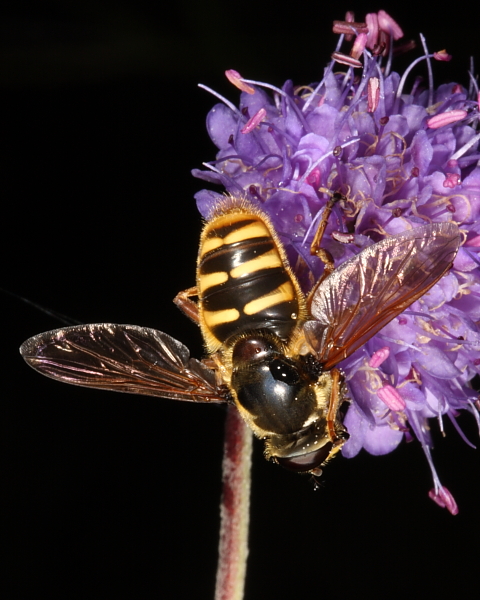
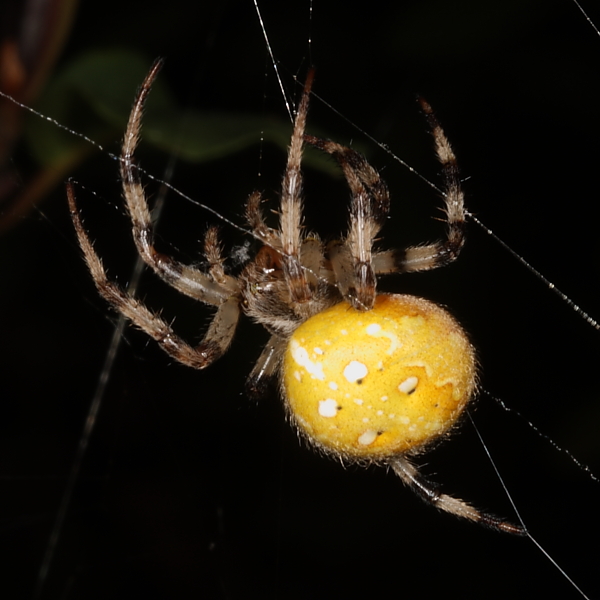
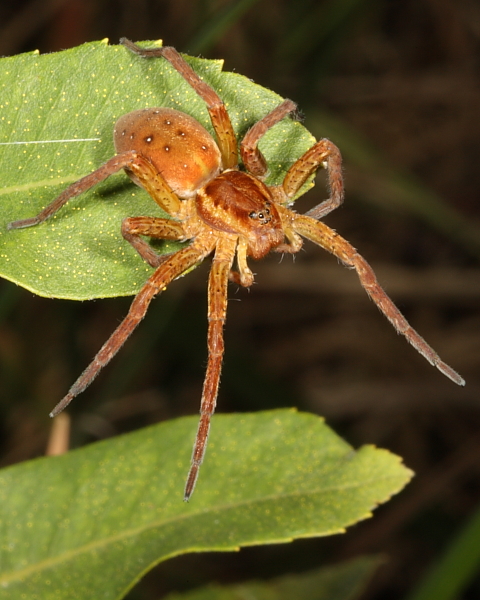
Tuesday 10th September [Cooler with sunny spells]
Six, mobile, juvenile Ruff Philomachus pugnax were feeding around Top End with a single Dunlin Calidris alpina on Wookey Point, 2 Common Sandpipers Actitis hypoleucos at Indian Country, a Green SandpiperTringa ochropus at Hellfire Corner, 2 Common Greenshanks Tringa nebularia along Burmah Road and at least 8 Common Snipe Gallinago gallinago noted. The Black Swan Cygnus atratus was with the non-breeding flock of Mute Swans Cygnus olor on North Shore.
The current water level according to Bristol Water is 55%.
Wednesday 11th September [Cool with sunny spells]
A disappointing couple of visits this morning, if I'm honest, with nothing new to write about. The 2 Common Greenshanks Tringa nebularia, a Green SandpiperTringa ochropus, a juvenile Ruff Philomachus pugnax and a Common Sandpiper Actitis hypoleucos were along Burmah Road, with another Common Sandpiper along the Indian Country bank, and our Black Swan Cygnus atratus was off North Shore. Oh, and I only saw a single Common Snipe Gallinago gallinago, at Hellfire Corner. I resorted to counting Northern Pintail Anas acuta, which have increased in number to 14, but drew the line at counting the other dabbling ducks, although I can say with some certainty that Eurasian Wigeon Anas penelope are increasing daily too. Dave Northover, who'd walked the south side when we met, reported a Peregrine Falco peregrinus, which might explain why the shorebirds were a little thin on the ground.
This evening I had another quick check around and saw the Northern Lapwing Vanellus vanellus and 24 Common Snipe at Top End. The juvenile Ruff had moved to Polish Water in front of the Lodge.
Thursday 12th September [Warm and sunny]
Although a walk to Top End from the Lodge produced a list of 50 species, there was no change around among the shorebirds. There were still 2 Common Greenshanks Tringa nebularia, a Green SandpiperTringa ochropus and a Common Sandpiper Actitis hypoleucos along Burmah Road. The juvenile Ruff Philomachus pugnax had relocated to Wookey Point where I saw the Northern Lapwing Vanellus vanellus and there were single Common Sandpipers at Holt Bay and Indian Country. At the Lodge I heard a Dunlin Calidris alpina calling and picked it up flying around the dam end. I also spotted the Black Swan Cygnus atratus off North Shore and at least 10 Eurasian Siskins Carduelis spinus in the copse feeding in the Birch Betula sp. trees.
In the afternoon I went to look for hoverflies on the North Shore and saw 8 Small Coppers Lycaena phlaeas, 2 Meadow Browns Maniola jurtina, a pair of Common Blues Polyommatus icarus and lots of Small Tortoiseshells Aglais urticae and whites Pieris spp. Colin Hunt told me he'd seen a Clouded Yellow Colias croceus at Top End earlier. The hoverflies included the following (with a few to be determined):
- Episyrphus balteatus
- Rhingia campestris
- Eristalis arbustorum
- Eristalis intricarius
- Eristalis tenax
- Helophilus pendulus
- Syritta pipiens
Friday 13th September [Overcast with light showers]
Despite the change in the weather, there is still not much sign of visible migration hereabouts. The bird list today has a very familiar ring to it. I only saw a single Common Greenshank Tringa nebularia, a Green SandpiperTringa ochropus and 2 Common Sandpipers Actitis hypoleucos along Burmah Road with another at Top End. The Northern Lapwing Vanellus vanellus and 7 Common Snipe Gallinago gallinago were around Bell's Bush and the other Greenshank was on Wookey Point. As a result, I thought I'd count some wildfowl and recorded 7 Barnacle Geese Branta leucopsis, 98 Canada Geese Branta canadensis, 55 Eurasian Wigeon Anas penelope, 14 Northern Pintails Anas acuta and 24 Little Grebes Tachybaptus ruficollis. I really ought to be counting Gadwall Anas strepera and Northern Shovelers Anas clypeatus which are present in good numbers for Blagdon - perhaps tomorrow.
Saturday 14th September [Sunny spells and breezy]
A Ringed Plover Charadrius hiaticula was looking rather folorn and lonely on Tiny's Shallow this morning. From the Top End hide I could see 2 Common Greenshanks Tringa nebularia, a Green SandpiperTringa ochropus, a single Common Snipe Gallinago gallinago and the Northern Lapwing Vanellus vanellus. There were many more Canada Geese Branta canadensis today and they've brought 16 Barnacle Geese Branta leucopsis in with them. The Black Swan Cygnus atratus was over at the North Shore. It's a patch workers lot!
Sunday 15th September [Dry in the morning but the bad weather arrived early afternoon]
There were Canada Geese Branta canadensis everywhere from Rainbow to Wookey Points and they were still arriving when I left. I reckon there were 300+ with 15 Barnacle Geese Branta leucopsis and the Black Swan Cygnus atratus. It was hard to make out shorebirds because most of the wildfowl have moved over from Indian Country to the lee shore as the wind and driving drizzle set in. I saw at least one Common Greenshank Tringa nebularia, 2 Green SandpipersTringa ochropus, 9 Common Snipe Gallinago gallinago, an adult Yellow-legged Gull Larus michahellis, a Little Egret Egretta garzetta (Jeff Hirst saw one a couple of days ago) and hundreds of House Martins Delichon urbicum with a handful of Sand Martins Riparia riparia and a couple of Barn Swallows Hirundo rustica feeding around the trees.
This evening 10 Black-tailed Godwits Limosa limosa islandica had dropped in front of the Lodge at Polish Water. As it got dark the 16th Barnacle Goose flew in with a small group of Canada Geese from Chew.
Monday 16th September
There was no news from the lake today. I drove up to Cumbria at 0350 hrs to watch the Tour Of Britain cycle race go over Honister Pass with a couple of old school friends, Jim and Neil, in absolutely atrocious conditions of gale force winds and driving rain. It was freezing. We walked up from the Buttermere National Trust car park and on the way back had the good fortune to see a Red Squirrel flit across one of the feeder streams. It would have made a great picture as it danced from stone to stone.
Tuesday 17th September [Deteriorating weather with proper rain setting in at lunchtime]
Another disappointingly familiar report I'm afraid, but don't get me wrong, there are lots of birds on the lake to go through each day. Perhaps a Grey Phalarope or something will get blown in during the next few days. There were 7 Black-tailed Godwits Limosa limosa islandica at Wood Bay with 2 Common Greenshanks Tringa nebularia (one each at Wood Bay Point and Top End) and 5 Common Snipe Gallinago gallinago scattered about. The Black Swan Cygnus atratus was still present with at least 38 Mute Swans Cygnus olor (the highest count for some time).
The lake is 53% full today according to Bristol Water.
Wednesday 18th September [Dry with sunny spells]
It was flat calm when I arrived at about 0830 hrs this morning, so I was delighted to see a Black Tern Chlidonias niger over the dam end (though I didn't see it again when I got back from Top End at lunchtime). There was a Ringed Plover Charadrius hiaticula in front of the Lodge, 7 Black-tailed Godwits Limosa limosa islandica at Wood Bay with 2 Common Greenshanks Tringa nebularia (one each at Wood Bay Point and Top End again), a Common Sandpiper Actitis hypoleucos on Wood Bay Point and a Green SandpiperTringa ochropus at Burmah Road. I only saw a single Common Snipe Gallinago gallinago, but there was a Eurasian Sparrowhawk Accipiter nisus making its presence felt at Top End, so I expect most were keeping their heads down. The Black Swan Cygnus atratus is ranging around the lake and was at Top End when I left. I listed 59 species, including some Eurasian Siskins Carduelis spinus by the Lodge, so not a bad morning's work.
Mervyn Pearce texted later in the day to say he'd seen a Eurasian Hobby Falco subbuteo during the afternoon from Rainbow Point.
Thursday 19th September [Overcast]
I made an early start this morning and was lakeside by 0730 hrs. The Black Tern Chlidonias niger was at Top End, the Ringed Plover Charadrius hiaticula in front of the Lodge, 7 Black-tailed Godwits Limosa limosa islandica at Wood Bay with 2 Common Greenshanks Tringa nebularia (one each at Wood Bay Point and Top End) and the Black Swan Cygnus atratus at Long Bay. The Canada Geese Branta canadensis provided an impressive spectacle when flew in from Chew at 0830 hrs bringing a single Barnacle Goose Branta leucopsis (naturalised) with them, which together with the flock of 15 already at Wookey Point totalled 16. There were good numbers of hirundines 300+ flying around the copses on the south shore again today, most of which were House Martins Delichon urbicum though I did spot a few Sand Martins Riparia riparia among them.
Friday 20th September [A sunny day]
I popped down early this morning and saw the Black Tern Chlidonias niger flying around, the Black Swan Cygnus atratus at Green Lawn and at least 5 Black-tailed Godwits Limosa limosa islandica at Wood Bay and Burmah Road before I had to leave. I'm popping down to Devon to watch and photograph the Tour of Britain stage finish at Haytor on the edge of Dartmoor, an old student stomping ground.
This evening I met Mervyn Pearce at the lake and we added 2 Common Greenshanks Tringa nebularia to this mornings effort, but we couldn't work out how many Black-wits were there. It may be 5, but it could be up to 9, they are just so mobile. The Black Tern was also still present, as were 16 Barnacle Geese Branta leucopsis. He saw a Little Egret Egretta garzetta at Top End, before we met, too.
Saturday 21st September [Overcast and warm]
We did the WeBS count this morning and despite the many anglers dotted about in float tubes and boats, we saw the Black Tern Chlidonias niger, 2 Little Stints Calidris minuta, 2 Dunlin Calidris alpina, 7 Ringed Plovers Charadrius hiaticula, 7 Black-tailed Godwits Limosa limosa islandica, 2 Common Greenshanks Tringa nebularia and a Eurasian Hobby Falco subbuteo. The Tufted Duck Aythya fuligula total has crashed by over 1000 since last months count but dabbling duck numbers have generally increased, particularly Eurasian Teal Anas crecca. The Black Swan Cygnus atratus was still present. Full details on the WeBS Count Page.
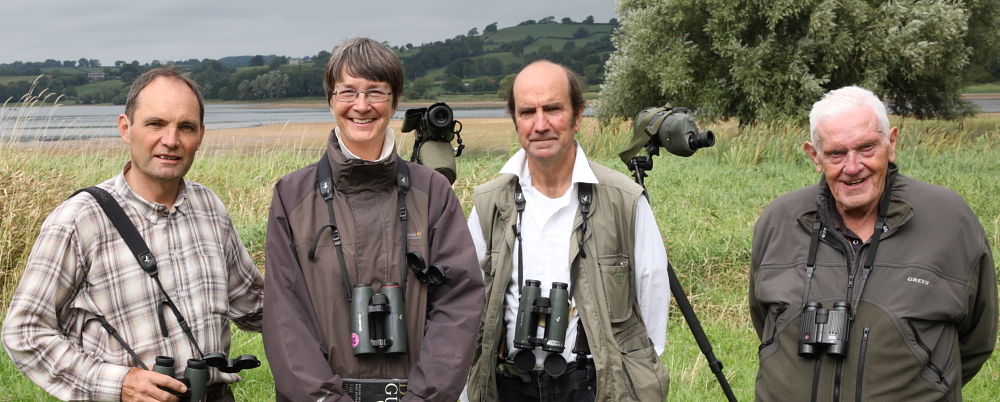
Sunday 22nd September [Overcast with some mizzle] Autumn Equinox
This evening I paid a short visit to the lake and saw 2 juvenile Little Stints Calidris minuta, a Dunlin Calidris alpina, 7 Ringed Plovers Charadrius hiaticula, 7 Black-tailed Godwits Limosa limosa islandica, 2 Common Greenshanks Tringa nebularia, a Common Sandpiper Actitis hypoleucos, 3 Common Snipe Gallinago gallinago and the Black Swan Cygnus atratus.
I also drove over to West Harptree because Chris Mott rang and asked if I'd take a look at an interesting road kill beside the A368 that resembled a Polecat Mustela putorius or Polecat-ferret. So, I popped over at dusk and took some pictures that I've sent to Dr Andrew Kitchener at the National Museum of Scotland for identification. See reply on 24th September.
Roger and Jean Staples emailed the following news from a morning visit as follows: a Garganey Anas qurequedula, the Black Tern Chlidonias niger, 9 Black-tailed Godwits Limosa limosa, 2 Common Greenshanks Tringa nebularia and a Peregrine Falcon Falco peregrinus.
We've made a minor revision upwards of the Canada Goose WeBS count, done yesterday, to 261.
Monday 23rd September [Dank and misty]
There was just a single juvenile Little Stint Calidris minuta at Top End today, with 3 Dunlin Calidris alpina, 7 Ringed Plovers Charadrius hiaticula, 3 Black-tailed Godwits Limosa limosa islandica and 2 Common Greenshanks Tringa nebularia. New in was a juvenile Common Redshank Tringa totanus at Polish Water and an adult Eurasian Oystercatcher Haematopus ostralegus at Green Lawn. I didn't see the Black Tern or Garganey last night or this morning, so assume they've probably gone. The Black Swan Cygnus atratus is still in residence though.
I went out in the evening to look around Butcombe village for Nathusius's Pipistrelles Pipistrellus nathusii, and then went back to the Bat House at Blagdon Lake to try and record ♂ 'advertisement' calls in .wav format rather than xero-crossing files. I made a surprise recording in Butcombe, but wasn't entirely successful with the Nathusius's Pipistrelles as I've explained on the Bat News Page.
I ran the 15W Heath Trap overnight (min. temp. 12 Celsius) at Home Bay Point and caught:
- B&F1764 Common Marbled Carpet Chloroclysta citrata 1
- B&F2107 Large Yellow Underwing Noctua pronuba 7
- B&F2361 Rosy Rustic Hydraecia micacea 1
- B&F2434 Burnished Brass Diachrysia chrysitis f. juncta 1
Tuesday 24th September [Misty until the sun came out late afternoon]
An early morning visit to collect the moth trap was followed by a quick look around, but I couldn't see beyond the near shore in the thick mist between 0700 - 0830 hrs. The juvenile Little Stint Calidris minuta was on Wookey Point with a single Dunlin Calidris alpina and 3 Ringed Plovers Charadrius hiaticula. One Black-tailed Godwit Limosa limosa islandica, 2 Common Greenshanks Tringa nebularia, 4 Common Snipe Gallinago gallinago and a juvenile Common Redshank Tringa totanus were at Top End and 2 more Ringed Plovers were in front of the Fishing Lodge. I shall go back later when the mist lifts.
Late this afternoon, the sun had finally broken through, and Wookey Point was host to our first Curlew Sandpiper Calidris ferruginea for three years. Also there were 9 (not 3) Ringed Plovers Charadrius hiaticula (one might be a Little Ringed, but it's not easy to be sure at the vewing distance) and 2 Dunlin Calidris alpina, in addition to the birds reported earlier. The Black Swan Cygnus atratus was off Rugmoor Point, a Little Egret Egretta garzetta at Bell's Bush and 2 Meadow Pipits Anthus pratensis were on Rainbow Point.
An apology, and thanks to Richard Mielcarek who queried my reporting the Black-wits as race limosa. While the August adult was limosa, today's birds are, of course, islandica. The european race L. limosa limosa is a local description race.
Dr Andrew Kitchener replied to my query about the road casualty Chris Mott reported to me on Sunday as follows: "It looks to me from your photos as if the dark coloration on the head does not reach the nose. If so, this would be a hybrid or ferret. It’s certainly a very dark animal."
Wednesday 25th September [A beautiful, still, sunny autumn day]
I only saw a single Ringed Plover Charadrius hiaticula in front of the Lodge at Polish Water this morning, but at Top End there were another 7 with the juvenile Little Stint Calidris minuta and a Dunlin Calidris alpina. There was no sign of the Curlew Sandpiper Calidris ferruginea, though other shorebirds at Top End included 2 Black-tailed Godwits Limosa limosa islandica, 2 Common Greenshanks Tringa nebularia and a juvenile Common Redshank Tringa totanus. The Black Swan Cygnus atratus was still present and after three days of looking for it, the Garganey Anas qurequedula swam into view at Flower Corner! There were 2 Common Sandpipers Actitis hypoleucos at the dam.
Thursday 26th September [Drizzle on a light north-easterly breeze]
The weather front has dropped a few migrants in this morning, though the drizzle made viewing conditions uncomfortable. I didn't see the Little Stint, but a Peregrine Falcon Falco peregrinus put everything up at Top End a couple of times while I was there, so it was hard to keep tabs on anything. There were at least 15 Ringed Plovers Charadrius hiaticula, a Dunlin Calidris alpina, a Black-tailed Godwit Limosa limosa islandica, a Common Greenshank Tringa nebularia, the juvenile Common Redshank Tringa totanus, a juvenile Ruff Philomachus pugnax, a Common Sandpiper Actitis hypoleucos at Cheddar Water, 6 Common Snipe Gallinago gallinago, an adult Yellow-legged Gull Larus michahellis, the small flock of 15 Barnacle Geese Branta leucopsis and the Black Swan Cygnus atratus. Notable over the last few days has been the drop in hirundine numbers, and despite the conditions being suitable, I didn't see any today. However, there has been a significant arrival of Northern Pintail Anas acuta overnight; I counted 49 before the Peregrine sent ducks all over the place. There were also a few more Meadow Pipits Anthus pratensis on the exposed mud.
The water level continues to drop and is now past the Top End hide, so viewing is best from Bell's Bush, but be careful because it is easy to flush wildfowl off the near shore if you walk to the edge of the meadow. Stay well back. Blagdon is 50% full (or empty depending on your point of view) according to the Bristol Water website. It was 100% full this time last year.
This afternoon the YACWAG team and I only managed to check 6 bat boxes. See the Bat News Page.
It seems that the ornithological event of the autumn, so far, at the lakes passed me by yesterday. Keith Vinicombe and the Chew guys had 18 Great Skuas (Bonxies), 3 or 4 Arctic Skuas, 5 Black-legged Kittiwakes, 2 Common Terns and 4 Common Scoters either on or through the lake. Somehow, I contrived to miss the lot during my five hours lakeside! The east coast has had a remarkable fall of Yellow-browed Warblers over the last couple of days, so check out the roving tit flocks and your local Sycamore trees (they seem to favour feeding in these in my experience).
Friday 27th September [Dry with sunny spells]
A RED LETTER DAY; GLOSSY IBIS - A FIRST FOR THE LAKE
What a morning! First, I spotted the 3rd Great White Egret Ardea alba for the lake in the channel at Top End and then, when many of the local birders were starting to disperse, a Glossy Ibis Plegadis falcinellus flew in and started to feed in the pond in front of the hide (though mainly out of view due to the Greater Pond Sedge obscuring the view of the right hand side). This bird had been seen a number of times, mainly in flight, at Chew Valley Lake earlier in the morning and becomes the first site record. It was quite mobile this afternoon feeding at Indian Country, Wood Bay and Butcome Bay where I last saw it at about 1900 hrs. The general consensus seems to be that it's a juvenile (see pic). It doesn't have any rings on its legs. The Great White Egret didn't show this afternoon while I was in the hide, but was seen later in the channel by Mervyn Pearce and I, and was still present at dusk on Rugmoor Point.
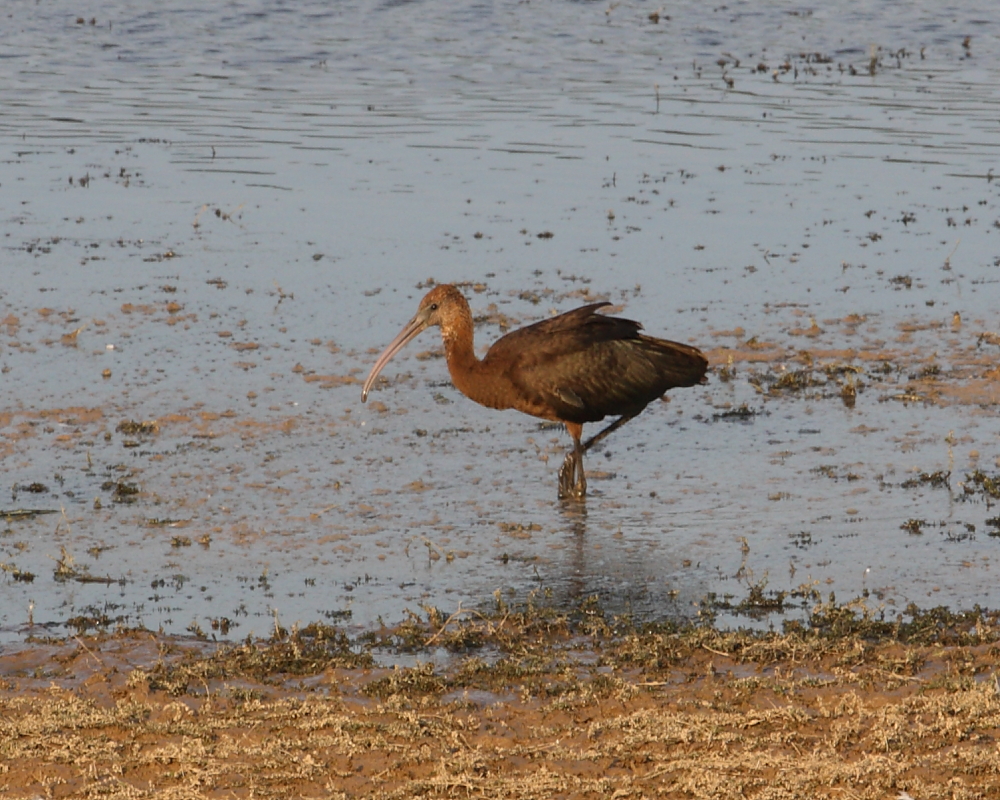
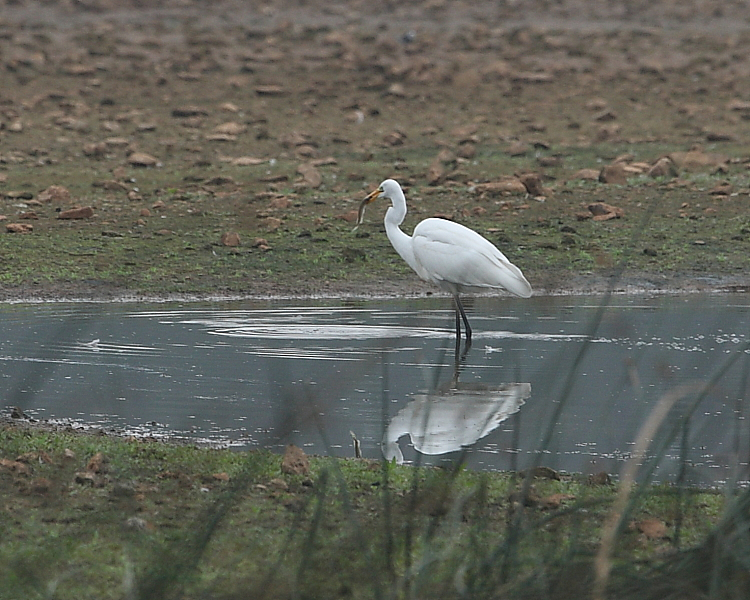
Also at Top End were 16 Black-tailed Godwits Limosa limosa islandica, a Common Greenshank Tringa nebularia, the juvenile Common Redshank Tringa totanus, the juvenile Little Stint Calidris minuta and Dunlin Calidris alpina, 6 Northern Lapwings Vanellus vanellus and 23 Ringed Plovers Charadrius hiaticula. I added a Green Sandpiper Tringa ochropus in flight and calling at Pipe Bay at sunset while I was at the Bat House. Four Barn Swallows Hirundo rustica flew east when I first arrived and a few more went through at dusk. The the Black Swan Cygnus atratus was present all day.
Saturday 28th September [Overcast with some rain]
Simon Isgar spotted the juvenile Glossy Ibis Plegadis falcinellus on Rainbow Point this morning at 0730 hrs and although mobile, it was still present at 0945hrs feeding along the bank at Cheddar Water (south end of the dam). The Great White Egret Ardea alba was at Top End although, again, it was quite mobile and did go up the feeder stream and out of view at times. There's a couple of record shots of the GW Egret taken in the gloom this morning in the Recent Images Gallery.
All the other shorebirds were around as well: 7 Black-tailed Godwits Limosa limosa islandica, a Common Greenshank Tringa nebularia, the juvenile Common Redshank Tringa totanus, the juvenile Little Stint Calidris minuta, 11+ Ringed Plovers Charadrius hiaticula and some Northern Lapwings Vanellus vanellus were all just about visible from the hide. The Black Swan Cygnus atratus seems to have taken up residence. Mervyn Pearce watched a Common Kingfisher Alcedo atthis fly west up the centre of the lake this morning.
On the way back from AWT Folly Farm, where I'd been helping with bat box checks all day (44 Natterer's, 10 Soprano Pips and a Noctule), I stopped at Top End and counted 16 Ringed Plovers and saw the Great White Egret at 1640 hrs. 2 Little Egrets Egretta garzetta flew east across Wood Bay (thanks for the message on the board in the hide Katie Carlisle, aged 5). I couldn't find the Glossy Ibis though. Thanks to Richard Mielcarek who rang me this morning to say a Pomarine Skua was possibly heading towards Blagdon (where there have been no records). Unfortunately, I was in West Harptree...
Sunday 29th September [Dry with sunny spells]
The juvenile Glossy Ibis Plegadis falcinellus was in Pipe Bay this morning showing quite nicely viewed from over the gate by the Bat House at the roadside. I left it there at 1345 hrs sleeping between short feeding bouts. The Great White Egret Ardea alba was at Top End until at least 1300 hrs, though often out of view in the channel or the pond. Gary Thoburn phoned while I was writing this to say a GWE had just flown into Herriott's, Chew Valley Lake around 1350 hrs, so we can't be sure if it's the same bird or not. I will be back at the lake this afternoon doing more bat box checks, and I'll look for the Blagdon bird while I'm there. Also at Top End were 2 Little Egrets Egretta garzetta, 6 Black-tailed Godwits Limosa limosa islandica, the Common Greenshank Tringa nebularia, the juvenile Common Redshank Tringa totanus, the juvenile Little Stint Calidris minuta, a Common Snipe Gallinago gallinago and 16 Ringed Plovers Charadrius hiaticula. Earlier I'd seen 2 Common Sandpipers Actitis hypoleucos at Cheddar Water.
Late this afternoon the YACWAG team and I checked more bat boxes along the south shore and while there I got some better pictures of the Glossy Ibis at Pipe Bay in the sunshine. I also saw a Common Kingfisher Alcedo atthis fly over the south end of the dam. We had quite a few bats in the boxes - see Bat News and I found a White-shouldered House-moth Endrosis sarcitrella (first site record) in one of the boxes containing an old birds nest at Home Bay.
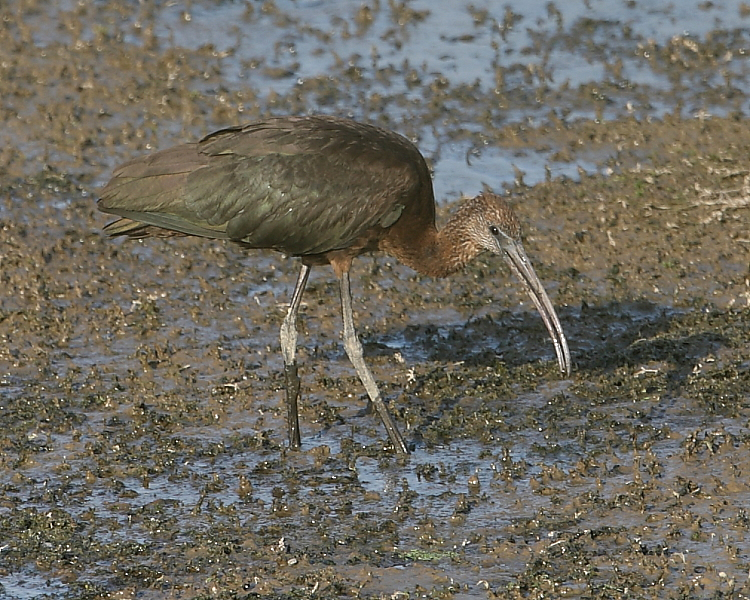
On the subject of the Great White Egret at Chew, I had distant views of the Blagdon bird still at Top End around 1630 hrs from Rainbow Point, so perhaps there are two birds involved.
Monday 30th September [Overcast and misty much of the day]
It's been a really interesting day beside the lake today, so I'll start with the bird news. The juvenile Glossy Ibis Plegadis falcinellus has been feeding between Pipe Bay and Home Bay despite repairs going on to the boat jetty. I did not see the Great White Egret at Top End where there has been something of a clear out. I managed to find 2 Little Egrets Egretta garzetta, a single Black-tailed Godwit Limosa limosa islandica, the juvenile Little Stint Calidris minuta, a Dunlin Calidris alpina, a Common Snipe Gallinago gallinago and 12 Ringed Plovers Charadrius hiaticula. But, as usual, a marauding Peregrine Falcon Falco peregrinus kept the smaller shorebirds very watchful and mobile. A Northern Wheatear Oenanthe oenanthe was in front of the Lodge on the shore as were 3 adult Sandwich Terns Sterna sandvicensis from at least 1000 hrs to 1530 hrs when they flew off.
The other big news of the day was that UK Glass Eels brought 20, 000 elvers from Gloucester to the lake that were released as part of the European Eel Anguilla anguilla conservation programme being delivered by the Sustainable Eel Group. The eels were captured on the River Severn in the spring and have been grown on for four months in preparation for release. The elvers, in polystyrene trays, were taken out in three boats for distribution around the lake. The press and various conservation bodies such as Avon Wildlife Trust and Bristol Avon Rivers Trust were all represented at the event.
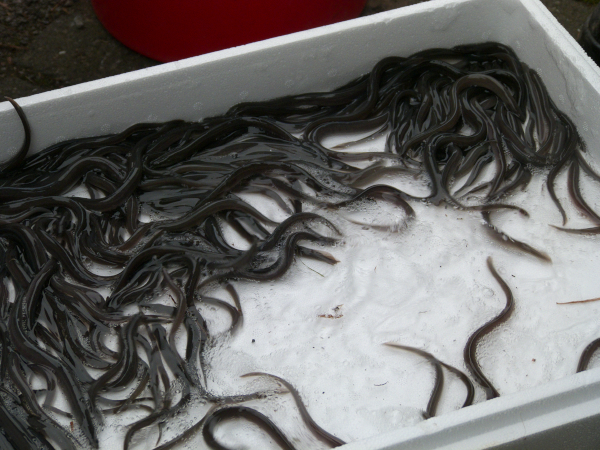 Elvers for translocation. 30th Sept. 2013.
Elvers for translocation. 30th Sept. 2013.
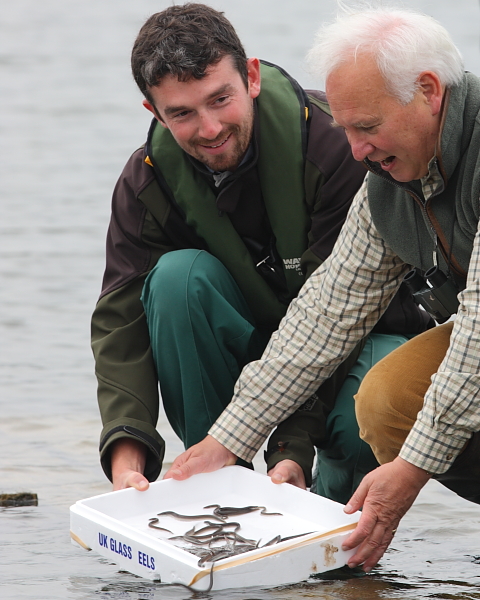
Bristol Water and the Environment Agency installed a trap below the dam earlier in the year to catch migrating elvers as they head up the Congresbury Yeo, from which the fisheries staff translocate the elvers over the dam and into the lake. I asked what plans were in place to measure the success of the translocation project and was told that by analysing the composition of the otoliths of the ear, more especially the strontium component in the calcium carbonate of which it's composed, it would be possible to work out what proportion of the migrating eels leaving the lake are from introduced stock, as opposed to, wild stock. I believe Bristol Water plan to re-instate the trap, that was formerly used to capture adult eels as they left the lake for sale at Billingsgate Market, so that the scientists can see if the project is helping halt the catastrophic decline in the European Eel population that has occurred in the last 30 years or so.